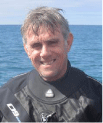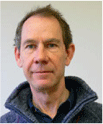Marine measurement, monitoring and verification for offshore carbon storage projects – learnings from a coastal Gippsland setting
Andrew S. Ross A * , Joanne Myers B , Erik Van Ooijen C , Tim Ryan C , Jim Greenwood B , David Hughes C , Andreas Marouchos C D , John Keesing B , Lev Bodrossy C , Dirk Slawinski B and Charles Jenkins EA CSIRO Energy, Kensington, WA, Australia.
B CSIRO Oceans and Atmosphere, Crawley, WA, Australia.
C CSIRO Oceans and Atmosphere, Hobart, Tas., Australia.
D CSIRO National Collections and Marine Infrastructure, Hobart, Tas., Australia.
E CSIRO Energy, Canberra, ACT, Australia.
The APPEA Journal 62 S347-S352 https://doi.org/10.1071/AJ21183
Accepted: 15 March 2022 Published: 13 May 2022
© 2022 The Author(s) (or their employer(s)). Published by CSIRO Publishing on behalf of APPEA.
Abstract
Designing cost-effective methods for implementing measurement, monitoring and verification (MM&V) plans for subsea CO2 storage is an active area of research globally. Despite some preliminary research and examples overseas, there remains a lack of established protocols and configurations for offshore carbon capture and storage (CCS) monitoring overlying storage sites and an absence of methods to establish environmental impact in the event of leakage. Over the last 4 years, CSIRO in collaboration with ANLEC R&D and CarbonNet have been undertaking research in the Gippsland region to inform the development of assurance monitoring approaches for subsea CCS operations to address three key technical assurance monitoring challenges: The ‘signal-to-noise’ problem: distinguishing CO2 release signatures from similar naturally occurring variability to reduce false alarm rates in future baseline monitoring design; characterising impact: determining the level of CO2 release that would be associated with environmental impact at a range of scales; and attributing impact: distinguishing changes resulting from other drivers and pressures in multiple-use zones (e.g. climate change) from the activities of CCS operations. The research has included a wide variety of approaches and technologies including the development and testing of fixed and mobile autonomous monitoring systems, chemical and acoustic sensing and the collection of biological datasets. These data have been used in the development of biogeochemical models and to define possible integrated MM&V frameworks. This paper will summarise this research and identify how it could be applied for offshore CO2 storage projects around Australia.
Keywords: assurance, Australia, carbon capture and storage, CarbonNet, CCS, CO2, marine, measurement monitoring and verification, MM&V, sensing, Victoria.

Dr Andrew Ross is a Principal Senior Research Scientist and Group Leader at CSIRO. He leads multidisciplinary research projects on basin geology, marine geology and marine monitoring. Recently he has been focussed technology commercialisation, CO2 storage and monitoring, and development of CCUS and hydrogen hubs. Dr Ross joined CSIRO in 2004 and has qualifications in marine biology, oceanography and petroleum geoscience. |

Jo Myers is a Project Delivery Coordinator at CSIRO. Prior to joining CSIRO in 2015, Jo has over 20 years experience and held positions within UK Government as a R&D Programme Manager and in Australia as a marine specialist in the oil and gas industry. Jo holds a Bachelor of Environmental Science (1st Honours) and has extensive regulatory and project management experience (Prince 2 Practitioner) overseeing large marine research portfolios and the building of relationships with service providers and customers to ensure successful management of complex projects. |

Erik Van Ooijen joined CSIRO in 2011 and is part of the Ocean Carbon Observation Team, where he is responsible for the IMOS Ocean Acidification Mooring Program. For this he has managed the deployment, instrumentation and data processing of over 60 successful deployments of pCO2 moorings. He was also responsible for the development and deployment of SeapHOx pH sensors, where he cooperated with NOAA, IMAS, UQ, the National Fishery College PNG and the AAD. He participated in several scientific cruises where he was responsible for the building and running of mass spectrometers to enable the underway measurement of the biological O2 production. He is currently involved in a CCS project for the development and testing of carbon chemistry sensor platforms for real-time data monitoring. |

Tim Ryan is a Senior Experimental Scientist with 28 years of experience in the field of fisheries acoustics (more broadly, underwater marine methods using active acoustics, i.e. sonar, echosounders). He has 25 peer reviewed publications and 47 client reports. His qualifications include diploma in Electronics and Digital Communications, BSc (Physics major) and a Grad Dip Industrial and Scientific Computing. Tim’s research ranges from the use of active acoustic methods to estimate biomass of commercial deepwater fish species (orange roughy, blue grenadier), characterisation of pelagic ecosystems at ocean-basin scale and at fine scale using deployed acoustic-optical systems that he helped develop. More recently he has been a leading contributor to the development of active acoustic systems for application in Carbon Capture and Storage (CCS) projects. This has involved using existing and novel technologies to characterise prospective CCS sites and to detect gas bubble releases at extremely low flow rates. |

Dr Jim Greenwood is a Senior Research Scientist and Team Leader with CSIRO Oceans and Atmosphere. His expertise is in ocean biogeochemical dynamics and has published on a wide range of subjects including ocean productivity, coastal water quality, seawater carbonate chemistry, ocean modelling, marine connectivity and chemical kinetics. Dr Greenwood has a PhD in Marine Chemistry and BSc (Hons) in Environmental Science. |

Dave Hughes is the Team Leader of the Moored Sensor Systems (MSS) Team and been responsible for the oversight of building and deployment of a range of moorings, including those used for the Carbon Capture Storage research commissioned by ANLEC R&D in the Gippsland region, Victoria. |

Andreas Marouchos is a Principal Research Engineer and Research Group Leader at CSIRO National Collections and Marine Infrastructure (NCMI). He provides engineering and technical leadership to scientists engaged in a variety of research fields across CSIRO and within the broader Australian innovation system. Andreas and his group specialise in the design of bespoke science systems and platforms for use in the marine and atmospheric research fields. This includes the design, development and manufacture of new leading-edge technologies and methods to meet present and future engineering challenges. In particular Andreas has been leading the development and adoption of autonomous marine systems in support of science, industry and defence. |

Dr John Keesing is a Senior Principal Research Scientist with CSIRO Oceans and Atmosphere Research. He has a PhD in Zoology and as a marine ecologist and fisheries scientist he has conducted research in Australia, New Zealand, China, India and Japan. Dr Keesing represents Australia on the UNESCO/Intergovernmental Oceanographic Commission’s International Panel on Harmful Algal Blooms. |

Levente Bodrossy is a Principal Research Scientist in the Environmental Genomics Team at CSIRO Oceans and Atmosphere in Hobart, Tasmania. His core expertise is microbial ecology the application of molecular methods for ecosystem assessment. His current research focuses on the understanding of the interactions between the marine microbiota and the marine environment, including biogeochemical cycles, the marine foodweb and the detection and attribution of environmental disturbances. |

Dirk Slawinski is currently working on several projects that involve coastal ocean and estuarine modelling, particle tracking of pelagic and benthic fauna, and benthic habitat modelling and estimation. His responsibilities range from collecting and manipulating historical physical and geographic data for model input and analysis to writing programs for data visualisation and processing. A wide range to cover, but always focussed on data and data ethics. |

Charles Jenkins obtained a PhD in Astrophysics from Cambridge University, Project Scientist for a number of major UK astronomical projects, including instrumentation for the William Herschel and Gemini telescopes; Principal Research Scientist at Schlumberger’s research lab in Cambridge, U.K.; Senior Fellow at the Australian National University; Fellow of the Australian Institute of Physics; recipient of the Kelvin Medal for science outreach in 2007. Charles is the monitoring and verification manager at the carbon storage site in the Otway Basin, Victoria, run by the CO2CRC and is heavily involved in Carbon Storage research across CSIRO and beyond. |
References
Blackford JC, Stahl H, Bull JM, Bergès BJP, Cevatoglu M, Lichtschlag A, Connelly DP, James RH, Kita J, Long D, Naylor M, Shitashima K, Smith D, Taylor P, Wright I, Akhurst M, Chen B, Gernon TM, Hauton C, Hayashi M, Kaieda H, Leighton TG, Sato T, Sayer MDJ, Suzumura M, Tait K, Vardy ME, White PR, Widdicombe S (2014) Detection and impacts of leakage from sub-seafloor deep geological carbon dioxide storage. Nature Climate Change 4, 1011–1016.| Detection and impacts of leakage from sub-seafloor deep geological carbon dioxide storage.Crossref | GoogleScholarGoogle Scholar |
Chadwick A, Williams G, Delepine N, Clochard V, Labat K, Sturton S, Buddensiek M-L, Dillen M, Nickel M, Lima AL, Arts R, Neele F, Rossi G (2010) Quantitative analysis of time-lapse seismic monitoring data at the Sleipner CO2 storage operation. The Leading Edge 29, 170–177.
| Quantitative analysis of time-lapse seismic monitoring data at the Sleipner CO2 storage operation.Crossref | GoogleScholarGoogle Scholar |
Flohr A, Schaap A, Achterberg EP, Alendal G, Arundell M, Berndt C, Blackford J, Böttner C, Borisov SM, Brown R, Bull JM, Carter L, Chen B, Dale AW, de Beer D, Dean M, Deusner C, Dewar M, Durden JM, Elsen S, Esposito M, Faggetter M, Fischer JP, Gana A, Gros J, Haeckel M, Hanz R, Holtappels M, Hosking B, Huvenne VAI, James RH, Koopmans D, Kossel E, Leighton TG, Li J, Lichtschlag A, Linke P, Loucaides S, Martínez-Cabanas M, Matter JM, Mesher T, Monk S, Mowlem M, Oleynik A, Papadimitriou S, Paxton D, Pearce CR, Peel K, Roche B, Ruhl HA, Saleem U, Sands C, Saw K, Schmidt M, Sommer S, Strong JA, Triest J, Ungerböck B, Walk J, White P, Widdicombe S, Wilson RE, Wright H, Wyatt J, Connelly D (2021) Towards improved monitoring of offshore carbon storage: a real-world field experiment detecting a controlled sub-seafloor CO2 release. International Journal of Greenhouse Gas Control 106, 103237
| Towards improved monitoring of offshore carbon storage: a real-world field experiment detecting a controlled sub-seafloor CO2 release.Crossref | GoogleScholarGoogle Scholar |
Hansen O, Gilding D, Nazarian B, Osdal B, Ringrose P, Kristoffersen J-B, Eiken O, Hansen H (2013) Snøhvit: the history of injecting and storing 1 Mt CO2 in the Fluvial Tubåen Fm. Energy Procedia 37, 3565–3573.
| Snøhvit: the history of injecting and storing 1 Mt CO2 in the Fluvial Tubåen Fm.Crossref | GoogleScholarGoogle Scholar |
Hoffman N (2018) The CarbonNet Project’s Pelican Storage Site in the Gippsland Basin (September 3, 2018). In 14th Greenhouse Gas Control Technologies Conference Melbourne 21–26 October 2018 (GHGT-14). Available at: https://ssrn.com/abstract=3366069
IEA (2021) ‘Net Zero by 2050.’ IEA, Paris. Available at https://www.iea.org/reports/net-zero-by-2050
IPCC (2005) IPCC Special Report on Carbon Dioxide Capture and Storage. In ‘Prepared by Working Group III of the Intergovernmental Panel on Climate Change’. (Eds B Metz, O Davidson, HC de Coninck, M Loos, LA Meyer) p. 442. (Cambridge University Press: Cambridge, United Kingdom and New York, NY, USA)
Langford RP, Bernecker T, Connell L, Dance T, Lupton N, Michael K, Mitchell CH, Nguyen D, O’Brien PE, Ricard L (2016) Carbon dioxide storage potential of the Gippsland Basin: results of a study undertaken as part of the National CO2 Infrastructure Plan. Record 2016/32. (Geoscience Australia, Canberra).


